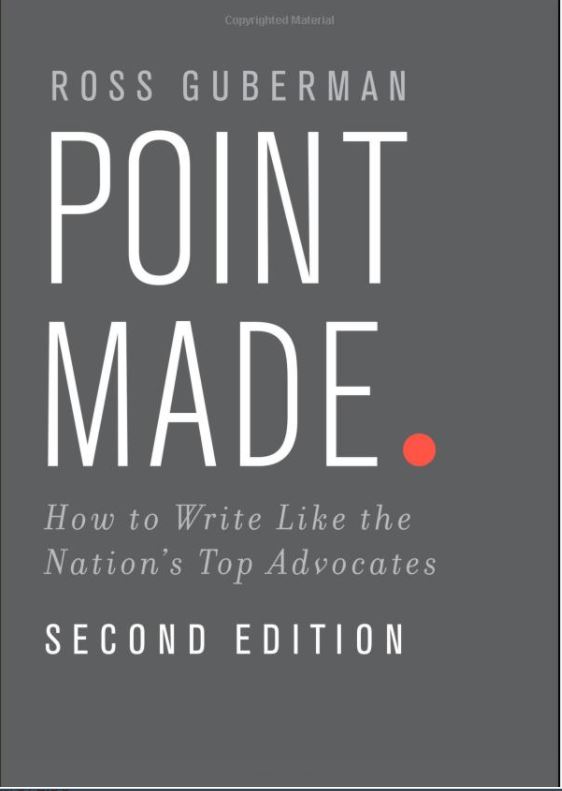Five Ways to Write Like Then-Solicitor General Elena Kagan—United States v. Stevens
As the nation’s first female Solicitor General, current Supreme Court Justice Elena Kagan has signed her name to several first-rate briefs. One of her best was in United States v. Stevens. The case began when Congress decided to ban the distribution of “crush videos,” which appeal to fetishists who enjoy watching high-heeled women stomp small animals to death. Congress couldn’t resist going further, though, and banned the distribution of any depiction of animal cruelty already banned by law.
Enter Mr. Stevens, a pit-bull aficionado who’d distributed films of his beloved animals fighting. Under the new statute, those films earned him more than three years in prison. Not surprisingly, he challenged the statute on First Amendment grounds.
In her quest to defend the statute, Solicitor General Kagan faced tough adversaries in Pattie Millett and Tom Goldstein, whose own brief makes Mr. Stevens sound more like a puppy-loving PETA president than an animal-hating fetishist. Millett and Goldstein may win more than just the image wars: At oral argument, the Justices were skeptical of the government’s position, wondering if bullfighting might be covered, too. Even so, Kagan’s writing should make any taxpayer proud.
Here are five techniques she uses:
1. Parade Those Horribles
The government has a problem: Its morality play needs an animal hater, but Stevens doesn’t appear to fit the bill. Many people—and perhaps many Justices—might even sympathize with him, wondering why a pit-bull lover should be thrown in prison under an animal cruelty statute aimed at stomping out an obscure fetish.
So Kagan does what many great advocates do when they need more emotional pull: draw on what Tenth Circuit Judge Stephen Anderson calls “a parade of horribles or ultimate absurdity, unworkability, or untenability.” In Kagan’s case, those horribles are as horrible as can be: in what is likely a Supreme Court first, she invokes serial killers Jeffrey Dahmer, Ted Bundy, and David Berkowitz—who she helpfully explains, for those too young to remember, is the “Son of Sam” killer. Why do Jeffrey Dahmer and Ted Bundy make cameos in the government’s brief? Because, Kagan says, this trio of serial killers “all committed acts of violence against animals before moving on to human victims.”
Kagan claims that she’s making the serial-killer link to show the government’s compelling interest in banning animal cruelty. But don’t you think the government also wants you to imagine the viewers of Mr. Stevens’s videos lurking in your neighborhood ten years down the road? And that’s the beauty of the horribles parade.
2. Rise Above the Fray
If Kagan ratchets up the imagery in invoking bogeyman Jeffrey Dahmer, she ratchets down the rhetoric in attacking her true adversary—in this case, the Third Circuit. As with most of the top advocates’ briefs, you’ll never hear that an adversary’s argument is “preposterous on its face” or that a court’s reasoning is “specious in the extreme”—phrases that former Judge Patricia Wald has called common “no-nos.”
In place of such tiresome bursts of shock and awe, Kagan uses the less titillating—but more convincing— technique of saying that the other side is simply “wrong” or that the court’s holding is “incorrect”:
[T]he court incorrectly believed that Church of the Lukumi Babalu Aye, Inc. v. City of Hialeah, 508 U.S. 520 (1993), resolved that issue.
The court of appeals’ holdings that the depictions are protected speech and that the statute is facially unconstitutional are wrong.
[T]he court suggested that the statute cannot constitutionally be applied to depictions of animal cruelty when the underlying acts were legal where they were performed. That is incorrect.
3. Hurry Up And Wait
Most litigators’ sentences are top-heavy. Here’s a typical one: “Defendant’s reliance on said promise should have been illustrative of Defendant’s intent to enter into the formation a binding agreement.”
Kagan’s sentences are the opposite: they start with a bang. In these three passages, every sentence—and every clause—starts with a one-syllable word (I’ve cut the citations).
Like obscenity, the depictions appeal to viewers only at the basest level and “offend[] the sensibilities” of most citizens.
Also like obscenity, the images Section 48 covers are “specifically defined by” law and are created for “ensuing commercial gain,” rather than for any educational, scientific, or other useful purposes.
And of course, the exceptions clause in Section 48 is an expanded version (excluding more material from the Section’s coverage) of one part of Miller’s obscenity test.
To be sure, only some of the material here appeals to sexual cravings or depicts sexual conduct, as all legally defined obscenity does.
But if non-sexual obscenity were possible—if obscenity were to retain some of its original, colloquial meaning as depraved and loathsome to the senses—then this material surely would qualify.
Each unprotected category created by the Court over the decades shares certain characteristics, but each also has its own distinct scope.
So, for example, in Ferber, the Court rejected the view that child pornography must fit into the existing definition of obscenity to fall outside the First Amendment’s protection.
In that case, the court of appeals had assumed that the material at issue must qualify as obscene, but this Court disagreed, explaining that the First Amendment does not prohibit a State from “going further” than obscenity so long as “the evil to be restricted so overwhelmingly outweighs the expressive interests, if any, at stake.”
Thus, whether a specific category of speech lacks First Amendment protection is governed by the analysis initiated in Chaplinsky, and does not depend on whether the speech to be regulated is equivalent or strictly analogous to an existing “low-value” category.
And even if some of the depictions reached by Section 48 do express some sort of idea—for example, that gratuitous cruelty to animals is tolerable or appropriate—they may be prohibited because of the way the idea is expressed. As this Court has explained, certain narrow categories of speech are unprotected not because “they constitute ‘no part of the expression of ideas,’” but because they constitute “‘no essential part of any exposition of ideas’”; “their content embodies a particularly intolerable (and socially unnecessary) mode of expressing whatever idea the speaker wishes to convey.”
So, for example, child pornography may express an idea about the appropriateness of certain sexual behavior with children, but the Court nonetheless has declined to extend First Amendment protection to such material.
4. Count ’em
Many litigators use lists to good effect in introductions, for example, when listing reasons their client should prevail. But the best writers use lists in less obvious settings as well, say, when they’re distinguishing a case or, as here, explaining a dense point of statutory construction [1]:
Four features of the statute narrowly circumscribe the statute’s reach.
First, the statute covers only those depictions “of conduct in which a living animal is intentionally maimed, mutilated, tortured, wounded, or killed” . . . .
Second, the statute only applies to depictions of illegal conduct . . . .
Third, Section 48 encompasses only those images that are “knowingly create[d], s[old], or possesse[d]” with the specific “intention of placing that depiction in interstate or foreign commerce for commercial gain” . . . .
Fourth, Congress exempted from the statute’s reach any depictions with “serious religious, political, scientific, educational, journalistic, historical, or artistic value.”
Kagan includes another impressive list, this time a three-part list of interests supporting the challenged criminal statute, each one in parallel form:
[T]hree principal interests support Section 48.
First, the government has an interest in reinforcing the prohibitions of animal cruelty in state and federal law by removing a financial incentive to engage in that egregious, illegal conduct.
Second, the government has an interest in preventing the additional criminal conduct that is associated with the torture and mutilation of animals underlying the production and distribution of those materials.
Third, the government has an interest in protecting public mores from the corrosively anti-social effects of this brutality.
5. Add a Dash of Style
Top literary agent Noah Lukeman wrote a terrific book called A Dash of Style. It’s about how great writers—from Ernest Hemingway to Emily Dickinson—use punctuation to add elegance and flair.
Like the Chief Justice, Kagan has a knack for such creative punctuation. Take her liberal use of the em dash. Many times in her brief, she uses a pair of dashes to highlight an elaboration:
Because the depictions at issue feature—and in some instances, themselves cause—acts of illegal animal cruelty that are difficult to prosecute directly, Congress chose to target these depictions as a way to deter the underlying conduct.
And even if some of the depictions reached by Section 48 do express some sort of idea—for example, that gratuitous cruelty to animals is tolerable or appropriate—they may be prohibited because of the way the idea is expressed.
You can also use a dash to end a sentence with a final gloss, as Kagan does to great effect here:
[The prohibited material] also includes videos of dogfights, hog-dog fights, and cockfights—bloody spectacles of vicious animals forced to fight to the point of exhaustion or death.
Speaking of final glosses, no matter how Mr. Stevens and his pit bulls fare, I’ll keep digesting Kagan’s briefs—and perhaps one day her opinions, too.
 By
By




